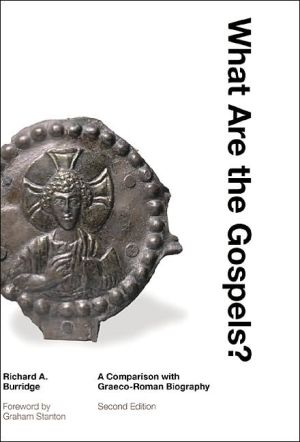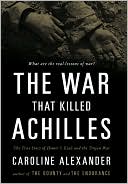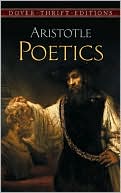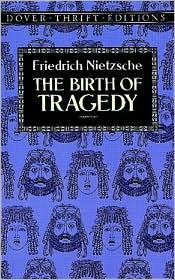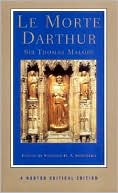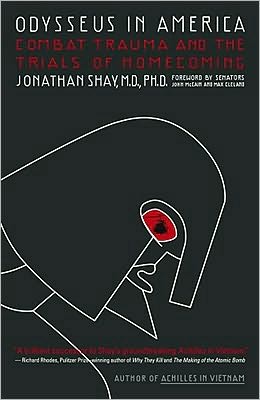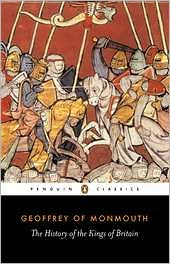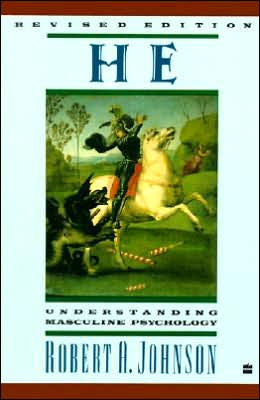What Are the Gospels?: A Comparison with Graeco-Roman Biography
Richard Burridge's acclaimed study of the Christian Gospels is significantly updated and expanded in this second edition. Here Burridge engages the field of Gospel studies over the last hundred years, arguing convincingly for viewing the Gospels as biographical documents of the sort common throughout the Graeco-Roman world. In pursuing the question of his book's title, Burridge compares the work of the Christian evangelists with that of Graeco-Roman biographers. Drawing on insights from...
Search in google:
Dr Burridge contends that scholarly study of the genre of the Gospels has gone full circle over the last century of critical scholarship.
WHAT ARE THE GOSPELS?\ A Comparison with Graeco-Roman Biography \ \ By Richard A. Burridge \ William B. Eerdmans Publishing Company\ Copyright © 2004 Wm. B. Eerdmans Publishing Co.\ All right reserved.\ ISBN: 0-8028-0971-5 \ \ \ \ Chapter One\ Historical Survey\ The documents... presenting themselves as biographies of the Founder of Christianity (1863)\ They cannot be included in the category of biographies (1928)\ The gospels are biographies, albeit ancient ones. (1977)\ The study of the genre of the gospels appears to have gone round in a full circle over the last century or so of critical scholarship. The nineteenth-century assumption about the gospels as biographies is explicitly denied by the scholarly consensus of most of the twentieth century. In recent years, however, a biographical genre has begun to be assumed once more. The latest position is naturally not exactly the same as the original one: much water has flowed beneath the critical bridge in the intervening century, and all this must be taken into account. However, the circular impression of something being asserted, denied and then coming back into fashion is not all that misleading. This book attempts to provide a good foundation for the reintroduction of the biographical view of the gospels. We begin, therefore, with a brief survey of the progress of the debate, considering the arguments of several key works from the main important periods: the turn from the nineteenth to the twentieth century, the middle of this century and recent decades.\ A. From the Nineteenth to the Twentieth Century\ 1. Ernest Renan (1863)\ It was fashionable in the nineteenth century to write 'Lives of Jesus', such as that by Ernest Renan. Renan thought it was possible to write a biography of Jesus, beginning with his birth and infancy, his education and the influence of his time and environment (chapters 1-4), and going on through his ministry to the events of his death, concluding with a summary of the essential character of his work (chapter 28). The book's introduction reveals that Renan's main sources are the four canonical gospels, assumed to be biographies, with the evangelists as the biographers of Jesus. Furthermore, the gospels belong to a subgroup of the wider genre of biography: 'They are neither biographies after the manner of Suetonius, nor fictitious legends in the style of Philostratus; they are legendary biographies.' They are to be compared with Lives of saints, heroes or philosophers, in which 'historical truth and the desire to present models of virtue are combined in various degrees'. Further, Renan discussed the differences between the synoptic gospels and the fourth. The relationship of John to Jesus is akin to that between Plato and Socrates: the discourses 'represent to us the sermons of Jesus, as the dialogues of Plato render us the conversations of Socrates', and thus John is seen as 'the biographer of Jesus, as Plato was of Socrates'.\ 2. C. W. Votaw (1915)\ Such comparisons of the gospels with contemporary classical biography reached their zenith in Clyde Weber Votaw's article of 1915 in which he set out to place the gospels within the literature of the Graeco-Roman period. After a very brief introduction to classical literature and the way in which the gospels were used as 'memorabilia' of Jesus by Christians undertaking the task of evangelizing the Graeco-Roman world, he comes to the crucial question of biography. He subdivides this genre into two groups: historical biography, which presents all the dates and facts in an ordered accurate method, and popular biography, intended to acquaint the reader with the subject in a practical or hortatory way. Although the two groups shade into one another, Votaw is convinced that they can be distinguished by their method: accurate history or disconnected memorabilia. The gospels are of the popular variety because of their method and 'the extreme difficulty of recovering the historical Jesus'. However, to the same group, and for the same reasons, other writings intended to promote the personality and message of three other moral-religious teachers may also be consigned. These are Socrates (469-399 BC), Apollonius of Tyana (c. AD 10-97) and Epictetus (c. AD 50-130). Votaw, therefore, proceeds to compare such works with the gospels, beginning with a brief description, with extracts, of the works by Arrian on Epictetus and Philostratus on Apollonius of Tyana. The similarities and parallels he discovers are put down to their all 'belonging to the same type of literature, namely, popular biography'.\ The closest parallel, however, is that between Socrates and Jesus, and also between the writings of their disciples: the second part of the article compares the gospels with Plato's Dialogues and Xenophon's Memorabilia. They all share a common motive - to restore the reputation of one executed by the state - and a common core of historical information about their subject, but this is provided by a portrait rather than a photograph, overlaid with reflection and interpretation. Furthermore, the time interval between the death of the subject and the writing of the accounts is approximately the same. The differences - that the Socratic literature is more extensive and that the gospels have been written down in a language different from that spoken by their subject - do not prevent the parallel.\ 3. Evaluation\ Both authors attempt to relate the gospels to Graeco-Roman biography. Such setting of the gospels within the literary relationships of their day must be applauded. However, apart from the obvious difficulty that Renan and Votaw wrote before the insights of form criticism, there are problems with both their understanding of genre theory and their handling of Graeco-Roman biography.\ The literary theory of genre requires careful consideration of how works may be described as belonging to a shared genre. Renan sees his own Life of Jesus, nineteenth-century ideas of biography and Graeco-Roman Lives as all being the same thing. Votaw never asks how genre may be defined; parallelism of subject-matter, particularly of Jesus and Socrates, together with a shared purpose is sufficient for these works to belong to the same type of literature. The criteria are thus all to do with content; questions about literary form or analysis of structure are hardly discussed, if at all. The disparity between the length of the gospels and that of the Apollonius of Tyana or the Socratic literature does raise questions about these works belonging together. Votaw's concerns are more about overall, general impressions to be gained from the works, rather than generic considerations of a technical nature. If the gospels are to be identified with these biographies, much more attention will need to be given to analysis of form and structure and to what actually constitutes genre.\ Graeco-Roman biography includes works of a wide range of types, subjects and dates. Subdivisions within this range need to be accurately defined. Renan's distinction is again in terms of content, particularly the historical veracity or legendary nature of the work. Votaw's historical and popular biographies are identified also in terms of the historical objectivity of the works. Whether any ancient biographies would qualify for inclusion in the first group with its modern stress on critical research is debatable. Further, the stress on content and overall impression of the subject means that works of a clearly different genre, e.g. Plato's Dialogues, which are philosophical treatises, can be considered as biographies for the purposes of comparison with the gospels.\ Thus, much more consideration needed to be given both to the literary theory of genre and to the nature of Graeco-Roman biography if Renan's and Votaw's comparison of the gospels with such works was to prove profitable. However, developments in German scholarship meant that it would be over fifty years before these comparisons would be considered again within critical orthodoxy.\ B. The Rise of Form Criticism\ The development of form-critical approaches turned the focus of attention away from the evangelists as authors to the oral transmission of units of gospel tradition. We cannot document here this massive shift in the interpretation of the gospels as a whole, but will consider the two main contributions to the question of gospel genre which established the consensus for the next fifty years, namely, that they are unique, sui generis pieces of literature.\ 1. Urliteratur and Kleinliteratur\ Unlike Renan and Votaw, Norden (1898) saw no parallels and thought the gospels were something new and different from contemporary literature. Wendland (1912) anticipated Votaw's historical v. popular distinction with a different stress: Graeco-Roman biography depended upon the author's literary personality and intention. However, the process of collecting and assembling units of oral tradition, lying behind the gospels' composition, prevented such literary concerns. The evangelist thus became more of a popular storyteller and collector with no personal individuality, and the parallels for the gospels should be sought among similar products of oral tradition, such as the Homeric literature or the stories in the Pentateuch.\ Overbeck (1882) also stressed the preliterary development of the gospels with the term Urliteratur for the New Testament books, lying between the oral material of the primitive Christian communities and later, truly literary writings of the patristic period. Dibelius (1919) differentiated between formal 'literary' works, produced by the conscious intention of an author, and the end product of popular tradition and story-telling. The gospels 'are unliterary writings' (Kleinliteratur). 'They should not and cannot be compared with "literary" works' (Hochliteratur). Such a process of oral tradition has a radical effect on the question of the personality of the author(s): because many anonymous individuals are involved, we cannot talk of the work as belonging to the personality of any one; rather, it is the development of the tradition itself which is the dominant factor.\ 2. Karl Ludwig Schmidt\ In 1919, Schmidt demonstrated that the differences between the synoptic gospel accounts can be seen most clearly in the links or seams by which the various stories are joined. From this he concluded that these units, or pericopae, circulated independently within the oral tradition and were then strung together, like so many pearls on a piece of string, by the evangelist. It is clear that this leaves very little room for any concept of authorial intention, purpose or literary pretensions - and thus the question of the genre of the whole work is replaced by a concern for the particular form of each individual pericope.\ However, it was his seminal article in 1923 for the Festschrift for Hermann Gunkel's sixtieth birthday which really set the tracks for the next four decades. Schmidt began by dismissing Votaw's suggestions, drawing upon Wendland's comments about the literary personality of the author, which is present even in Xenophon or Arrian, but absent from the gospels. The parallelism of the gospels with the Memorabilia, noted by Votaw, is superficial, nothing other than the similarity of Jesus and Socrates. The difference is clear: the former are Kleinliteratur, but Xenophon is Hochliteratur. A search of contemporary Greek, Jewish, oriental and Rabbinic literature reinforces the argument that the gospels are a form of folk literature and the evangelist 'a naive folk story-teller' ('ein naiver Volkserzähler').\ His own suggestion about the place of the gospels in the history of literature begins with the uncompromisingly ringing declaration that the gospel is basically 'not Hochliteratur, but Kleinliteratur, not the product of an individual author, but a folk-book, not biography, but cult-legend'. On the other hand, Graeco-Roman biographies belong to Hochliteratur because of their conscious literary intention; even a book like Philostratus' Apollonius of Tyana shows clearly the self-conscious personality of the author. The gospels cannot be compared with such works; instead, other parallels must be sought among examples of Kleinliteratur. Those suggested include the German folktales of Dr. Faustus, legends about saints and monks, St Francis, and the great Maggid of the Hasidim. These comparisons lead us a step further, to the 'cultic character' of such traditions, stories passed on within groups or communities, for the sake of their own beliefs and expectations.\ Thus Schmidt put forward three important arguments, which militate against any discussion of the gospel genre: the distinction between Hochliteratur and Kleinliteratur, with the gospels being the latter and finding their parallels among oral folktales, the absence of the literary 'I' on the part of the evangelists, and the stress on setting their production and transmission within a cultic community. On this basis, questions may well be asked about the form of the individual units, but not the genre of the gospel as a whole.\ 3. Rudolf Bultmann\ Bultmann's work ensured that this approach to the genre of the gospels dominated the scholarly consensus. It is seen most clearly in The History of the Synoptic Tradition (second edition 1931) and in his article of 1928 on the gospels. He built on these assumptions in Theology of the New Testament, and the Supplement of 1962 to The History of the Synoptic Tradition, although updating the bibliography, does nothing to alter the view expressed in the vital concluding pages. From such a consistent approach, Bultmann's views on three areas, the analogies to the gospels, the development of their overall form, and its uniqueness, can be documented easily.\ First, Bultmann considers the setting of the gospels in their contemporary literary environment and comes to the conclusion that there are no parallel works. Against Votaw, he is particularly concerned to rule out any question of a link with the genre of biography, since the gospels have 'no interest in historical or biographical matters' such as Jesus' human personality, origin, education or development, or his appearance and character. Then he follows and reproduces Schmidt's arguments about Hochliteratur and Kleinliteratur: the lack of cultivated techniques and the absence of the authors' personalities mean that they are not 'major' or 'grand literature'. There is a tenuous link with the genre of memoirs and Lives of the philosophers because of the shared feature of gathering together dialogues and episodes, but the gospels' mythic and cultic background, together with their absence of historical or scientific concerns, means that the parallel is unacceptable. Instead, he turns to Kleinliteratur and picks up Schmidt's suggestions about Faust, St Francis and so on.\ \ Continues...\ \ \ \ Excerpted from WHAT ARE THE GOSPELS? by Richard A. Burridge Copyright © 2004 by Wm. B. Eerdmans Publishing Co.. Excerpted by permission.\ All rights reserved. No part of this excerpt may be reproduced or reprinted without permission in writing from the publisher.\ Excerpts are provided by Dial-A-Book Inc. solely for the personal use of visitors to this web site. \ \
1Historical survey32Genre criticism and literary theory253Genre criticism and Graeco-Roman biography534Evaluation of recent debate785Generic features1056The generic features of early Graeco-Roman [actual symbol not reproducible]1247The generic features of later Graeco-Roman [actual symbol not reproducible]1508The synoptic Gospels1859The fourth Gospel21310Conclusions and implications23311Reactions and developments252App. IAnalysis charts of verb subjects308App. IIGospel genre, christological controversy and the absence of rabbinic biography322
